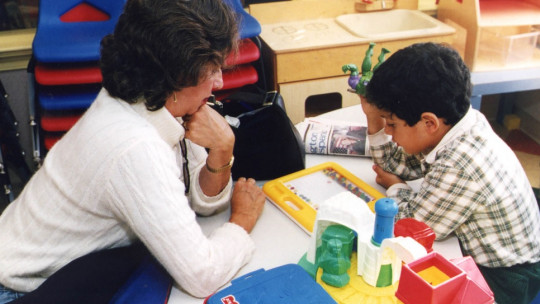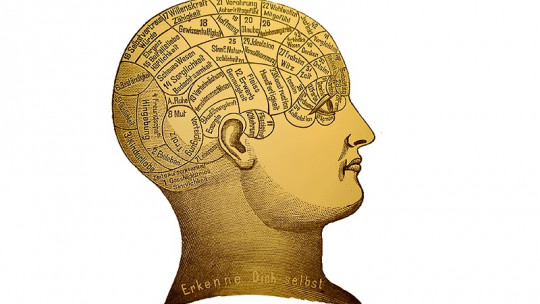The concepts (and states) of illness and health can be understood from different models or approaches. Until a few years ago, the predominant model in the field of medicine and psychology was the biomedical model, focused on the disease itself and the “mind-body” dichotomy.
However, in 1977 and with the help of psychiatrist George L. Engel, a new model emerged, which was here to stay in many areas of health: the biopsychosocial model, which takes into account the biological, psychological and social factors of the person when explaining, understanding and facing a certain state of health or illness, disability or disorder.
Biopsychosocial model: definition and characteristics
The biopsychosocial model is one of the models that we find in the field of psychology, and even psychotherapy. It is an approach that establishes that there are various factors that influence the development and well-being of a person, in the context of an illness, disorder or disability.
These factors, as the name of the model itself indicates, are three types: biological (genetics, inheritance…), psychological (behaviors, emotions, thoughts…) and social (educational opportunities, poverty, unemployment…).
Origin: George L. Engel
The origin of the biopsychosocial model is found in the ideas of the American psychiatrist and internist George L. Engel (December 10, 1913 – November 26, 1999), who in 1977 proposed a model based on the idea that in all phases of a certain illness, disorder or disability, the three types of factors mentioned coexist (a which we can also add spiritual factors).
This is extrapolated to the state of health; That is, all these factors combine to influence both health and disease. Thus, the biopsychosocial model that Engel introduces moves away from the “mind-body” dichotomy postulated by the traditional medical model (and which we will see a little later), and considers the functioning of people from a holistic and integral point of view. .
In this way, in this complex system of factors of various kinds, other subsystems interact, which are interrelated through a dynamic process.
Beyond the biomedical model
The biopsychosocial model represents an advance in the understanding of health in general, and mental health specifically, since it Prior to him, the model that predominated was the medical or biological model (a traditional reductionist model, where only biological factors matter).
In this way, the biopsychosocial model goes further, and maintains that we must understand health and illness as two states that arise from the combination of these three types of factors in the person’s life. Furthermore, from this approach We work for the well-being not only of the person or patient, but also for that of their family and community.
Traditional biological model vs. biopsychosocial model
As we have seen, The traditional biological model has a reductionist character since it suggests that a person’s illness is explained solely from medical and biological terms, with the illness being understood as a mere deviation from the person’s normal functioning, caused by a certain pathogen, genetic mutation, etc.
Furthermore, in this model the patient is not part of their healing process, which can lead to resistance to change.
This model also has other names, such as the “biomedical model,” and was introduced by the English doctor Richard Bright (1789-1858) in the 19th century. Thus, this model is based on a pathological approach, where the disease acquires great relevance, forgetting other factors that have a great influence on its origin, development and cure. On the other hand, it is a model that is based on the “mind-body” dichotomy.
Instead, In the biopsychosocial model, there is a belief in the power of the person to counteract the effects (or obstacles) derived from their disorder , disability or illness. That is, in this model the patient begins to have a more active role, since he himself is an agent of change, and that is why he is empowered – to the extent possible – from the three aspects: biological, psychological And social.
Thus, according to the biopsychosocial model, in contrast to the traditional medical model, it is no longer the body that becomes ill, but the person as a whole, with all that this implies.
Factors of the biopsychosocial model
As we have seen, the biopsychosocial model breaks with the traditional medical model because it takes into account factors that, until now, had not been taken into account when understanding a disease process, or a state of health. Let’s see, in summary, what each of these factors consist of.
1. Biological factors
Biological factors have to do with the biology of the person, that is, with their anatomy, their genetics , the cause of the disease in the case of suffering from one, mobility, physiology, etc. They are the factors that predominate in the biomedical model.
2. Psychological factors
The psychological factors of the biopsychosocial model have to do with the most personal sphere of the person, and encompasses their thoughts, emotions, behaviors, cognitive processes coping styles, psychopathologies, personality, illness behavior…
In this group of factors, we could also include the most spiritual side of the person (or even place it outside of it), since it also plays a key role in many disease processes and in one’s own health.
3. Social factors
Finally, within the social factors that the biopsychosocial model establishes to take into account in the development and coping with a certain disease or disability condition, we find stress, the perception of the latter, the economic and work situation (for example the unemployment situation), the perception of the daily burden, whether family or work, etc.
Areas of application
The biopsychosocial model is an approach that has been on the rise for some years now, and that we can find not only in psychology (and as a consequence, in psychotherapy), but also in other sciences and fields of knowledge, especially in the field of health, such as: pedagogy, psychiatry, social work, occupational therapy, sociology, physiotherapy…
On the other hand, In the field of intellectual disability and chronic diseases, the biopsychosocial model takes on a special role. This is due, among other reasons, to the fact that people who are dedicated to the care and attention of these people work in this area, and that from this model they can address their needs, giving the necessary importance to all these factors for rehabilitation or improvement. of the person, who, remember, is intended to have an active role in their well-being and/or healing.









